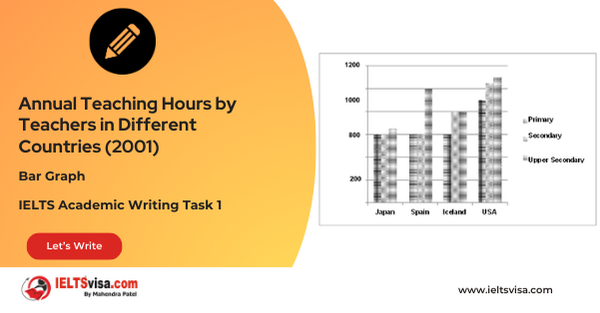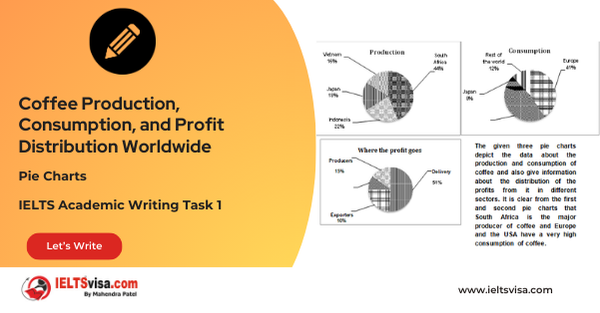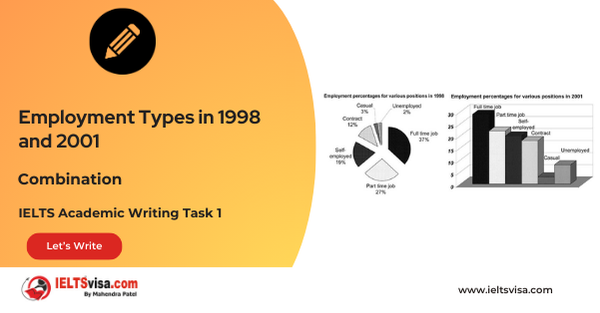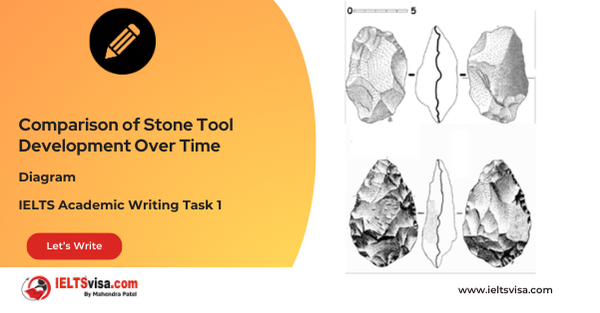The plan of a medical Centre in 2008 and 2010
IELTS Academic Writing Task 1 - Diagrams
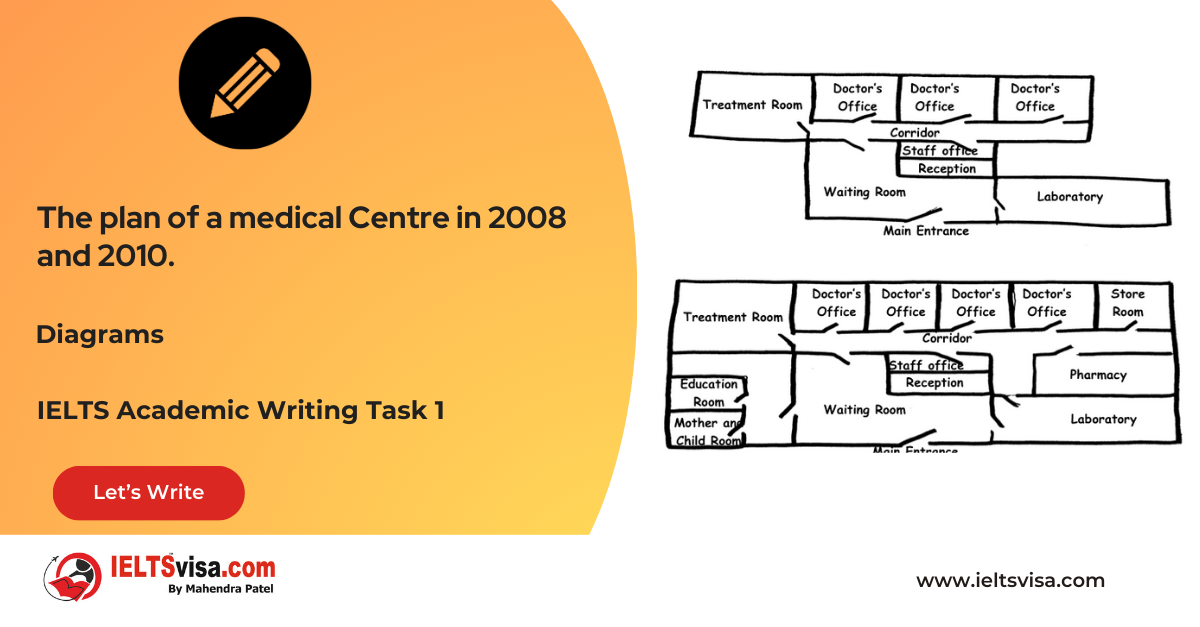
IELTS Writing Task 1 Question
The diagram below shows the plan of a medical centre in 2008 and 2010. Summarize the information by selecting and reporting the main features and make comparisons
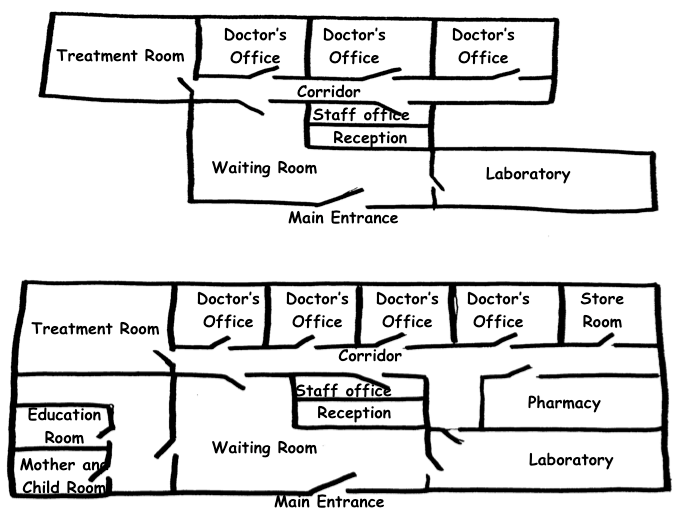
Common Questions for the Water Supply System Diagrams
1. Graph Type: Diagrams
2. Title: Layout of a Medical Centre in 2008 and 2010
3. What are the units of measurement?: Not applicable
4. Who: Patients and medical staff
5. When: 2008 and 2010
6. Where: A medical centre (location unspecified)
7. Topic: Changes in the layout of a medical centre.
Comparison Showing and Trends Any change over time (such as an increase or a decrease) is a trend.
Comparison 1 : Layout in 2008
- Details:
1. Main Entrance: Located towards the south, leading into a waiting room.
2. Reception Area: Positioned in the waiting room with a staff room behind it.
3. Laboratory and Treatment Rooms: The laboratory was in the southeast corner, and the treatment room was in the northwest corner.
4. Doctor’s Offices: Three offices lined the northern wall, all accessible from the corridor.
5. Vacant Spaces: There were vacant areas in the northeast and southwest corners.
Comparison 2 : Layout in 2010
- Details:
1. New Rooms: A mother and child room and an education room were added in the southwest corner, along with a store in the northeast corner.
2. Doctor’s Offices: The original three offices were reduced in size, resulting in four smaller offices.
3. Pharmacy Addition: A new pharmacy was opened behind the laboratory, with access from the corridor.
4. Laboratory Access: The laboratory gained another access point through the corridor.
5. Overall Layout: The rest of the layout remained largely unchanged from 2008.
Sample Answer
The diagrams illustrate the changes made to the layout of a medical centre between 2008 and 2010, highlighting significant alterations within just two years.
In 2008, the medical centre featured a main entrance at the southern end, which opened into a waiting room equipped with a reception area. Behind the reception was a staff room that led to a corridor. The laboratory was located in the southeast corner, accessible from the waiting room, while the treatment room was situated in the northwest corner. Three doctor’s offices lined the northern wall, all entering from the corridor, and there were vacant spaces in the northeast and southwest corners.
By 2010, the layout saw several improvements. A mother and child room and an education room were constructed in the southwest corner, while a store was added in the northeast corner. The doctor’s offices were made smaller, increasing their total number to four. Additionally, a pharmacy was established behind the laboratory with direct access to the corridor, and the laboratory itself received an extra access point. The overall design remained consistent with the 2008 layout, except for these significant modifications.
Overall, the medical centre underwent substantial changes to enhance its functionality and services within two years.
Top 28 Vocabulary
| Vocabulary (type) | Meaning | Synonyms | Examples |
| Illustrate (verb) | To explain or demonstrate something clearly | Show, depict | “The diagrams illustrate the layout changes.” |
| Layout (noun) | The way in which something is arranged | Design, configuration | “The layout of the medical centre changed significantly.” |
| Accessible (adjective) | Easy to approach or enter | Reachable, available | “The laboratory was made accessible from the waiting room.” |
| Alteration (noun) | A change made to something | Modification, adjustment | “The alteration included the addition of new rooms.” |
| Functionality (noun) | The quality of being suited to serve a purpose | Usability, practicality | “The changes improved the functionality of the medical centre.” |
|
Enhance (verb) |
To improve the quality, value, or extent of something |
Improve, upgrade |
“The centre underwent changes to enhance its functionality.” |
|
Construct (verb) |
To build or form something by combining parts |
Build, create |
“A mother and child room was constructed in the southwest corner.” |
|
Vacant (adjective) |
Not occupied or in use |
Empty, unoccupied |
“Vacant spaces were repurposed in the new layout.” |
|
Feature (verb) |
To include as an important part |
Include, incorporate |
“The 2008 layout featured three doctor’s offices.” |
|
Modification (noun) |
A partial change made to something |
Adjustment, alteration |
“The modifications included the addition of a pharmacy.” |
|
Reception (noun) |
A place where visitors are received |
Front desk, lobby |
“The reception area remained in the same location.” |
|
Improve (verb) |
To make something better |
Enhance, refine |
“The layout was improved to provide more services.” |
|
Establish (verb) |
To set up something on a permanent basis |
Create, set up |
“A pharmacy was established behind the laboratory.” |
|
Repurpose (verb) |
To adapt something for use in a different way |
Reassign, convert |
“Vacant areas were repurposed for new rooms.” |
|
Expand (verb) |
To increase in size, number, or importance |
Enlarge, extend |
“The number of doctor’s offices was expanded to four.” |
|
Accessible (adj) |
Able to be reached or used |
Reachable, available |
“The laboratory was made more accessible with an additional entrance.” |
|
Corridor (noun) |
A long passage in a building |
Hallway, passageway |
“The corridor provided access to the doctor’s offices.” |
|
Function (noun) |
The purpose for which something is designed or exists |
Purpose, role |
“The modifications enhanced the function of the medical centre.” |
|
Significant (adj) |
Sufficiently great or important to be worthy of attention |
Major, notable |
“Significant changes were made to the layout within two years.” |
|
Alter (verb) |
To change something slightly but noticeably |
Modify, adjust |
“The doctor’s offices were altered to create more space.” |
|
Redesign (noun) |
The process of designing something again |
Rework, overhaul |
“The redesign focused on adding new facilities.” |
|
Corner (noun) |
A place where two sides or edges meet |
Angle, edge |
“The northeast corner was used for the new storage room.” |
|
Laboratory (noun) |
A room or building equipped for scientific experiments |
Lab, research facility |
“The laboratory received an additional access point.” |
|
Establishment (noun) |
The act of setting up something permanently |
Creation, founding |
“The establishment of the pharmacy was a key addition.” |
|
Interior (noun) |
The inside part of something |
Inside, inner area |
“The interior design remained consistent with the 2008 layout.” |
|
Optimize (verb) |
To make the best or most effective use of something |
Maximize, refine |
“The layout was optimized to improve service delivery.” |
|
Utilize (verb) |
To make practical use of something |
Employ, use |
“Vacant spaces were utilized for new functional areas.” |
|
Addition (noun) |
Something included to improve or complete a system |
Inclusion, supplement |
“The addition of a store improved storage capabilities.” |

Our Books
Master IELTS Speaking Part 1
IELTS Writing Task 1 Book
IELTS Writing Task 2 Book
Writing Task 1 Question Types
Practice IELTS Other Modules
IELTS Listening
The IELTS Listening test assesses how well you can understand spoken English in various contexts. It lasts about 30 minutes and is divided into four sections with a total of 40 questions. The listening tasks become increasingly difficult as the test progresses.
IELTS Academic Reading
The IELTS Academic Reading section assesses your ability to understand and interpret a variety of texts in academic settings. It is designed to evaluate a range of reading skills, including skimming for gist, reading for main ideas, reading for detail, understanding inferences, and recognizing a writer's opinions and arguments.
IELTS Speaking
The IELTS Speaking test assesses your ability to communicate in English on everyday topics. It lasts 11-14 minutes and consists of three parts: introduction, cue card, and a discussion based on the cue card topic.
IELTS General Reading
IELTS General Reading tests your ability to understand and interpret various types of texts. Here are some key areas and types of content you can expect to encounter in the reading section, along with tips for effective preparation.
IELTS Academic Writing Task 1
In IELTS Academic Writing Task 1, you are presented with a visual representation of information, such as graphs, charts, tables, or diagrams, and you are required to summarize, compare, or explain the data in your own words.
IELTS General Writing Task 1
In IELTS General Writing Task 1, you are required to write a letter based on a given situation. The letter can be formal, semi-formal, or informal, depending on the prompt. Here’s a breakdown of the key components to include in your letter
IELTS Academic Writing Task 2
In IELTS Academic Writing Task 2, you are required to write an essay in response to a question or topic. Here’s a guide to help you understand the essential elements of this task
IELTS Exam Tips
To succeed in the IELTS exam, practice regularly, familiarize yourself with the test format, improve your vocabulary, develop time management skills, and take mock tests to build confidence.
Grammer for IELTS
Grammar is the foundation of effective communication in English. Understanding tense usage, subject-verb agreement, and sentence structure enhances clarity and coherence in writing and speaking.
Vocabulary for IELTS
Vocabulary plays a crucial role in the IELTS (International English Language Testing System) exam, especially in the Speaking and Writing sections. Here’s an overview of why vocabulary is important and how it impacts your performance
RECENT IELTS SAMPLES QUESTIONS AND ANSWERS
Task 1 – Column graph – Percentage of Young People Enrolled in Universities in 2000 and 2007.
20:00 Start Pause Stop [df_adh_heading title_infix="IELTS Writing Task 1 Question" use_divider="on"...
Task 1 – Bar Graph – Annual Teaching Hours by Teachers in Different Countries (2001)
20:00 Start Pause Stop [df_adh_heading title_infix="IELTS Writing Task 1 Question" use_divider="on"...
Task 1 – Pie Charts – Coffee Production, Consumption, and Profit Distribution Worldwide
20:00 Start Pause Stop [df_adh_heading title_infix="IELTS Writing Task 1 Question" use_divider="on"...
Task 1 – Column graph – Types of Transport Used by Tourists Visiting New Zealand from Five Countries in 2004.
20:00 Start Pause Stop [df_adh_heading title_infix="IELTS Writing Task 1 Question" use_divider="on"...
Task 1 – Bar and Pie Chart Combination – Employment Types in 1998 and 2001
20:00 Start Pause Stop [df_adh_heading title_infix="IELTS Writing Task 1 Question" use_divider="on"...
Task 1 – Diagram – Comparison of Stone Tool Development Over Time
20:00 Start Pause Stop [df_adh_heading title_infix="IELTS Writing Task 1 Question" use_divider="on"...


